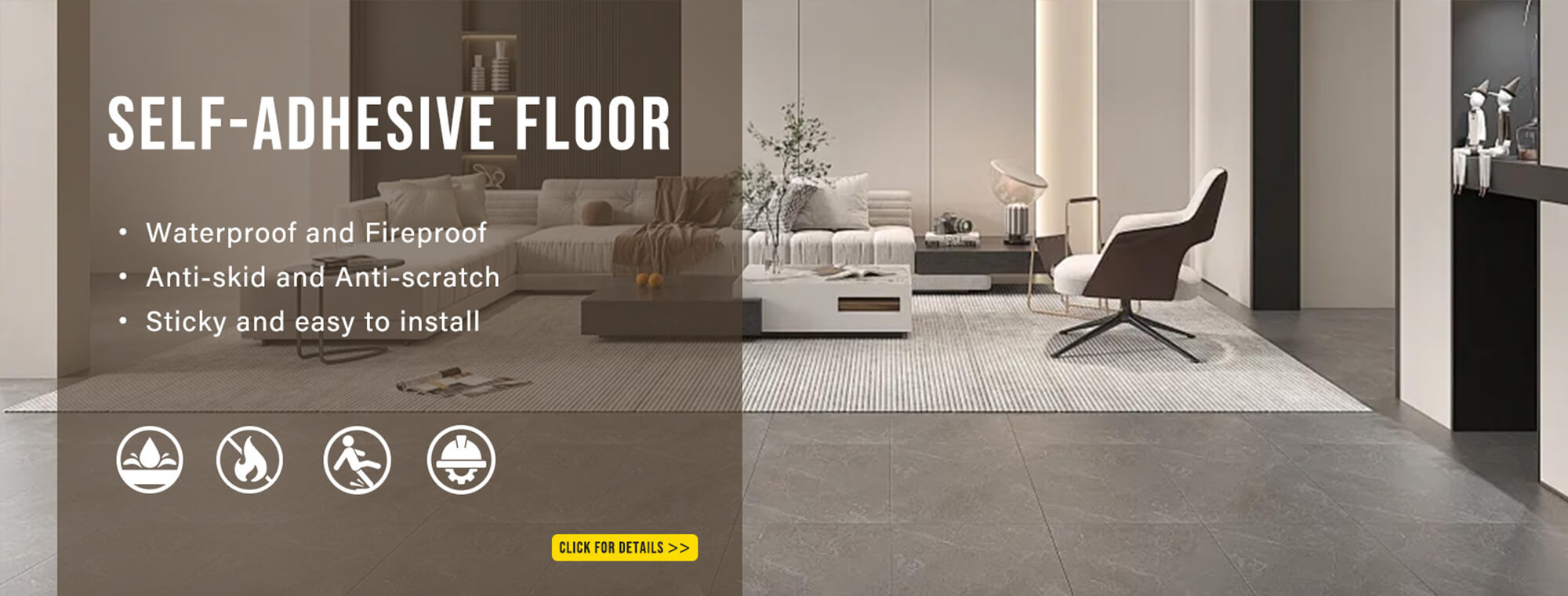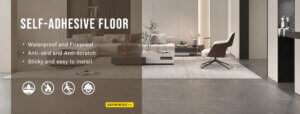Understanding Laminate Flooring
Laminate flooring is a multi-layer synthetic flooring product designed to resemble natural materials such as hardwood or stone. It is constructed through a process that involves a core layer, often made of high-density fiberboard (HDF), which provides stability and support. Over this core, a photographic layer is applied, giving the laminate its aesthetic appeal, typically mimicking the looks of wood grain floor or various stone designs. This layer is then topped with a clear protective coating that adds durability and resistance to scratches, stains, and fading.
One of the significant advantages of laminate flooring lies in its versatility. Available in a myriad of styles and textures, it can cater to diverse design preferences. From authentic-looking wood grain floors to elegant stone patterns, laminate flooring provides an economical way to achieve high-end looks without the associated costs. Additionally, its construction makes it suitable for areas of the home that may experience moisture, such as kitchens and bathrooms, unlike traditional hardwood flooring.
However, there are drawbacks to consider. Although laminate flooring can imitate the aesthetics of natural materials, it often lacks the warmth and texture of genuine wood, which some homeowners may prioritize. Furthermore, while laminate is generally easy to install, requiring a click-lock system that eliminates the need for glue or nails, it does require a smooth and even subfloor for optimal performance. Maintenance is relatively low, as regular sweeping and occasional damp mopping suffice to keep it looking pristine.
In conclusion, laminate flooring offers a practical and stylish solution for homeowners seeking the look of hardwood or stone without the hefty price tag. Its diverse styles, coupled with ease of installation and maintenance, make it an appealing choice for many different areas within the home.
Exploring Luxury Vinyl Tile (LVT) Flooring
Luxury Vinyl Tile (LVT) flooring has quickly gained popularity as a versatile and aesthetically appealing flooring option for homeowners. Comprised of multiple layers, LVT combines a vinyl backing with a design layer that mimics natural materials such as stone or wood grain floor. This construction not only enhances its aesthetic appeal but also contributes to its durability and functionality.
LVT flooring is available in a myriad of styles, patterns, and finishes, allowing homeowners to select designs that suit their unique decor preferences. Many LVT products are designed specifically to resemble various types of natural stone and wood grain floors, giving the appearance of premium materials without the associated maintenance and cost. This versatility makes LVT an excellent choice for virtually any room in the home, from high-traffic areas to more intimate spaces.
One of the standout features of LVT is its ease of installation. Unlike traditional hardwood or stone flooring, LVT can often be installed over existing floors, saving both time and labor costs. There are several installation methods, including glue-down, floating, and click-lock systems, each allowing for a different level of DIY involvement. This flexibility in installation makes LVT accessible for various skill levels.
Maintenance of LVT flooring is simple, requiring only regular sweeping and occasional mopping to keep its surface clean. Additionally, many LVT options come with scratch and stain-resistant coatings, which ensure the longevity of the flooring under everyday wear and tear. With a lifespan of up to 25 years with proper care, LVT flooring represents a durable choice for any homeowner seeking a combination of beauty and practicality.
In conclusion, Luxury Vinyl Tile (LVT) presents an attractive option for those looking to enhance their living spaces with durable, easy-to-maintain flooring. Its design versatility, combined with user-friendly installation and maintenance options, makes it a formidable contender compared to traditional flooring materials.
Comparative Analysis: Laminate vs. LVT Flooring
When choosing the right flooring for your home, it is essential to compare laminate and luxury vinyl tile (LVT) flooring based on several key factors. One of the most significant considerations is cost; typically, laminate flooring tends to be more budget-friendly than LVT. However, the price difference often reflects the varying levels of quality and lifespan, with LVT usually offering a longer-lasting product.
Durability is another critical point of comparison. Laminate flooring is engineered to withstand everyday foot traffic, yet it is generally less resistant to moisture compared to its LVT counterpart. LVT flooring, designed with waterproof properties, is particularly well-suited for areas prone to moisture, such as kitchens and bathrooms. Its durability not only protects against spills but also against scratches and dents.
Maintenance is vital in flooring selection. Laminate flooring requires periodic cleaning with specific products to maintain its appearance, while LVT is simpler to maintain, often needing just a damp mop for cleaning. This ease of maintenance can significantly impact your choice if you prefer low-effort options.
In terms of design options, both flooring types offer a vast array of styles and finishes. Laminate can mimic the appearance of wood grain floors effectively, while LVT is impressive in replicating natural materials such as stone and tile with a 3D effect. The ability to find designs that suit your aesthetic is more accessible with both options available in varying colors and patterns.
Lastly, comfort is a crucial aspect. Laminate flooring generally feels cooler to the touch, while LVT provides a softer, warmer underfoot experience, making it more comfortable for prolonged standing periods. Real-life scenarios indicate that families with small children or pets may benefit more from the comfort and durability of LVT flooring.
In conclusion, the choice between laminate and LVT flooring depends on individual needs and preferences, assessing aspects such as cost, durability, maintenance, design, and comfort to make an informed decision.
Making the Right Choice for Your Home
Choosing the right flooring for your home is a significant decision, as it impacts both the aesthetic appeal and functionality of your living space. When considering laminate versus LVT flooring, several factors come into play that may influence your decision. First, assess your lifestyle. For families with children and pets, durability and scratch resistance are paramount. In this case, LVT flooring often emerges as the preferable option, as it withstands heavy foot traffic and is less prone to damage compared to traditional wood grain floors. Conversely, laminate flooring may suit those who prioritize aesthetic variety while maintaining a budget-friendly approach.
Next, consider the specific functions of the rooms you are renovating. For high-moisture areas, such as kitchens and bathrooms, LVT flooring tends to outperform laminate due to its water-resistant properties. This makes it a reliable choice for environments where spills and humidity are common. On the other hand, laminate can be an excellent choice for bedrooms or living spaces, providing a warm, inviting look with its various wood grain patterns without the higher cost of hardwood.
Budget is another critical factor in your decision-making process. Laminate flooring generally has a lower upfront cost compared to LVT, making it appealing for those looking to enhance their homes without breaking the bank. However, it’s vital to consider long-term maintenance expenses. LVT flooring may require a higher initial investment but often offers better longevity, leading to potential savings in the long run. Moreover, think about installation; while both types are designed for ease of installation, hiring professionals may ensure a flawless finish for either option.
Ultimately, weighing the pros and cons of both laminate and LVT flooring will guide you to a well-informed choice that aligns with your needs. Personal experiences and testimonials from homeowners highlight the importance of considering unique lifestyles and room specifics in this decision-making journey.




